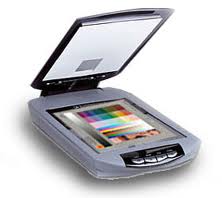This article is a continuation of “Accrual to Cash…What’s the Difference?” If you want to read it first, click here.
Now that you know the difference between the accrual and cash methods, let’s talk about the reason for the use of each.
The cash method is certainly the most widely used in small business. If no IRS regulations or other rules require a different method, the cash method will almost always be used. This is because it allows the payment of taxes with cash on hand. As mentioned before, the accrual method can be pretty scary when large tax bills come up with no available cash.
The cash method also allows some control over when income and expenses are recognized, and therefore when taxes will be due. For example, if taxes look like they will be high; when bills are paid and income is received can be adjusted. By paying bills in the current year that might normally have been paid in the following year, expenses are moved into the current year. By billing customers in the following year for work that would normally have been billed in the current year, income is moved to the following year. Both these tactics reduce income in the current year and move it to the next year.
Be aware that income manipulation must be done correctly and legally. It is legal to bill late. It is not legal to record a payment later than it was received. Once the business controls a payment received, it must be included in income. The business cannot receive a payment on December 30th and record it in the following year. This holds true regardless of when the payment is deposited.
Much of the time, the accrual method is used because it’s required by IRS regulations or other rules. Some businesses do choose to use it voluntarily though, because it reflects the true condition of the business. It shows exactly how much has been earned and spent, regardless of whether or not cash has changed hands yet. As mentioned in the last article, IRS regulations may force a switch to the accrual method at a later date. To avoid a forced and complicated switch, some businesses will just start with the accrual method in the first place.
Most regulatory changes are triggered because of increased income levels; generally around $5 million. In some cases this limit is higher. When the accrual method becomes required, the resulting income increase can be spread over four years. This benefit will be lost though if the required change is not made voluntarily. If the IRS forces the change, income recognition will be required all in one year. This can trigger much higher taxes as well as penalties and interest if the change was required in a previous year. Even if a previous year change was not made when required, it’s still best for the business to initiate the change. As long as the IRS didn’t have to force the change, the penalties and interest can be avoided.
With increasingly advanced technology and more pressure to collect taxes, it is becoming less likely the IRS will miss it when the requirements kick in. Therefore it is always best to make the switch when it’s required.
What has been presented here is a mere overview of a very complex issue. If you think this rule may be applying to your business, it would be best to contact your tax adviser and set up a comprehensive plan to deal with it. If you prefer to avoid that expense, please check back later as I plan to offer an eBook that will go into much more detail. It will cover the entire issue in simple and easy-to-follow steps that will save you hundreds or thousands of dollars in professional fees.
My purpose here is to make it possible for any taxpayer to avoid the expense of professional consultation for as long as possible. With my help and some effort on your part, you may be able to avoid the expense completely. If this is something you think you would be interested in, please leave a comment. Also, make sure you sign up for our mailing list in the box on the right. That way we can keep you up to date on this issue and let you know when this eBook and others like it become available. If there are other topics you would like discussed, please feel free to leave a comment about that too.
If this article was helpful to you, please click the "Like" button and also tweet it to your friends!
Thanks for visiting!

